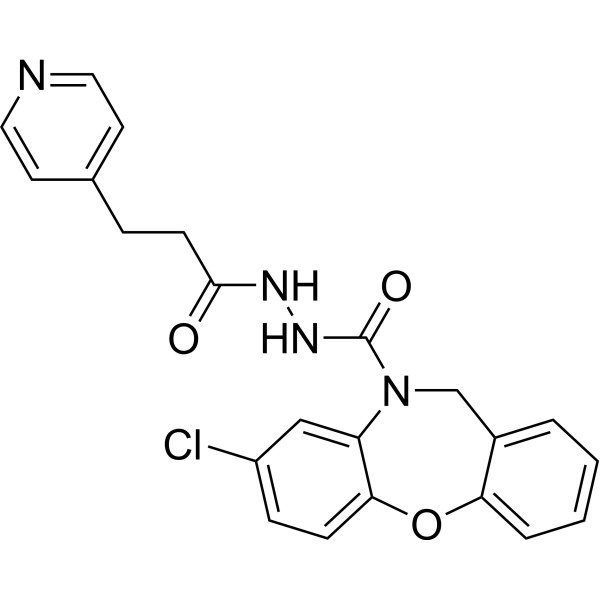SC 51089 free base
Modify Date: 2024-01-06 18:50:54

SC 51089 free base structure
|
Common Name | SC 51089 free base | ||
|---|---|---|---|---|
| CAS Number | 146033-03-6 | Molecular Weight | 422.86 | |
| Density | N/A | Boiling Point | N/A | |
| Molecular Formula | C22H19ClN4O3 | Melting Point | N/A | |
| MSDS | N/A | Flash Point | N/A | |
Use of SC 51089 free baseSC 51089 free base is a selective antagonist of prostaglandin E2 EP1 receptor, with Kis of 1.3, 11.2, 17.5, and 61.1 μM for EP1, TP, EP3, and FP receptors, respectively. SC 51089 free base exhibits neuroprotective activity[1][2][3]. |
| Name | SC 51089 free base |
|---|
| Description | SC 51089 free base is a selective antagonist of prostaglandin E2 EP1 receptor, with Kis of 1.3, 11.2, 17.5, and 61.1 μM for EP1, TP, EP3, and FP receptors, respectively. SC 51089 free base exhibits neuroprotective activity[1][2][3]. |
|---|---|
| Related Catalog | |
| Target |
EP1:1.3 μM (Ki) TP:11.2 μM (Ki) EP3:17.5 μM (Ki) FP:61.1 μM (Ki) |
| In Vitro | SC 51089 free base (5 μM; 24 h) 减弱前列腺素 E2 (PGE2) 诱导的暴露于 t-BuOOH 的神经元细胞死亡[2]。 |
| In Vivo | SC 51089 free base (40 μg/kg; infused i.p. for 28 d) 改善 HD 小鼠运动协调和平衡功能障碍,并挽救长期记忆缺陷[3]。 Animal Model: R6/1 mouse model of Huntington's disease (HD), from 13 to 18 weeks of age[3] Dosage: 40 μg/kg/day Administration: Infused i.p. at a rate of 0.11 μL/h during 28 days by osmotic mini-pump system Result: Ameliorated motor coordination and balance dysfunction. Rescued long-term memory deficit. Improved the expression of specific synaptic markers. Reduced the number of huntingtin nuclear inclusions in the striatum and hippocampus. |
| References |
| Molecular Formula | C22H19ClN4O3 |
|---|---|
| Molecular Weight | 422.86 |